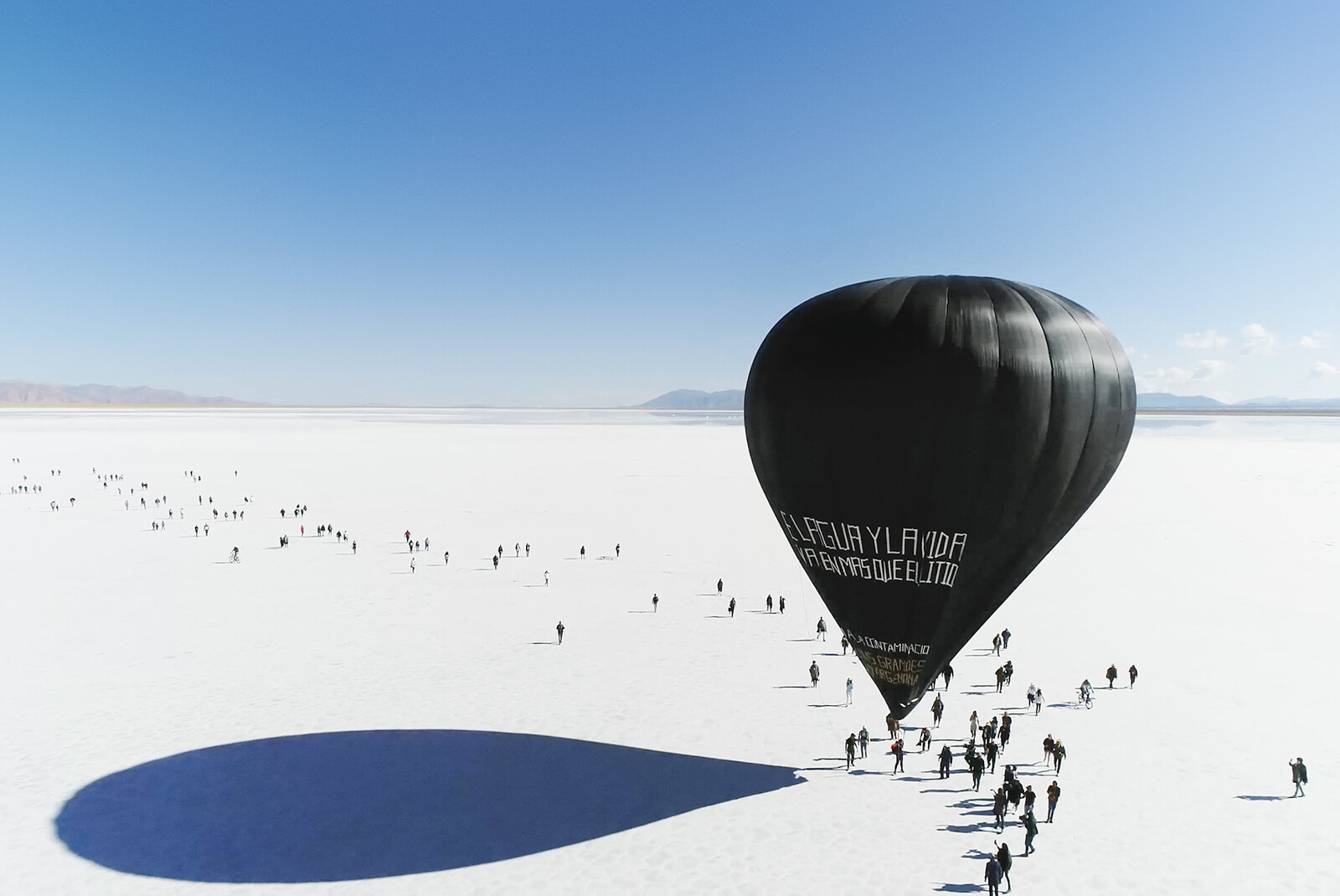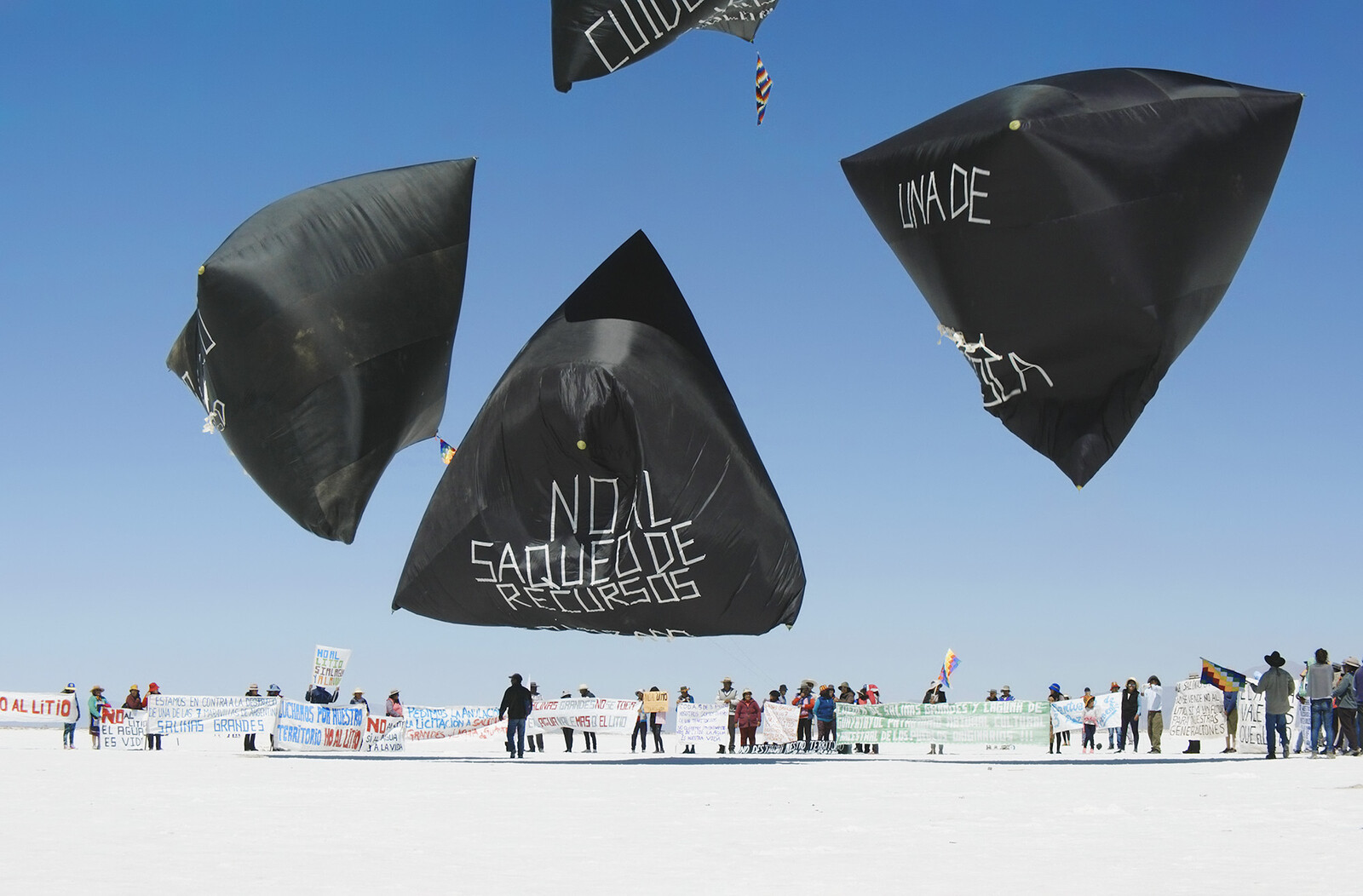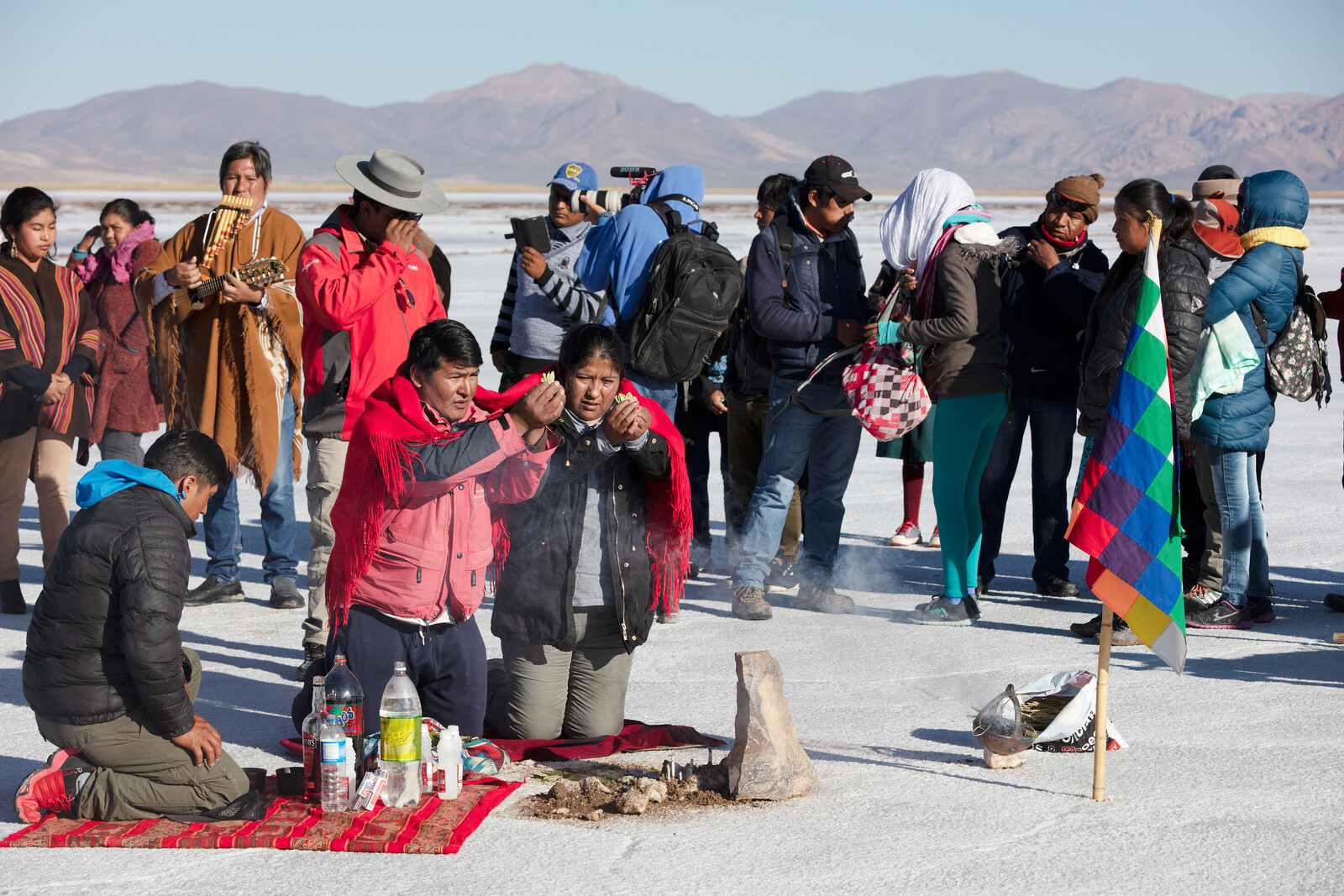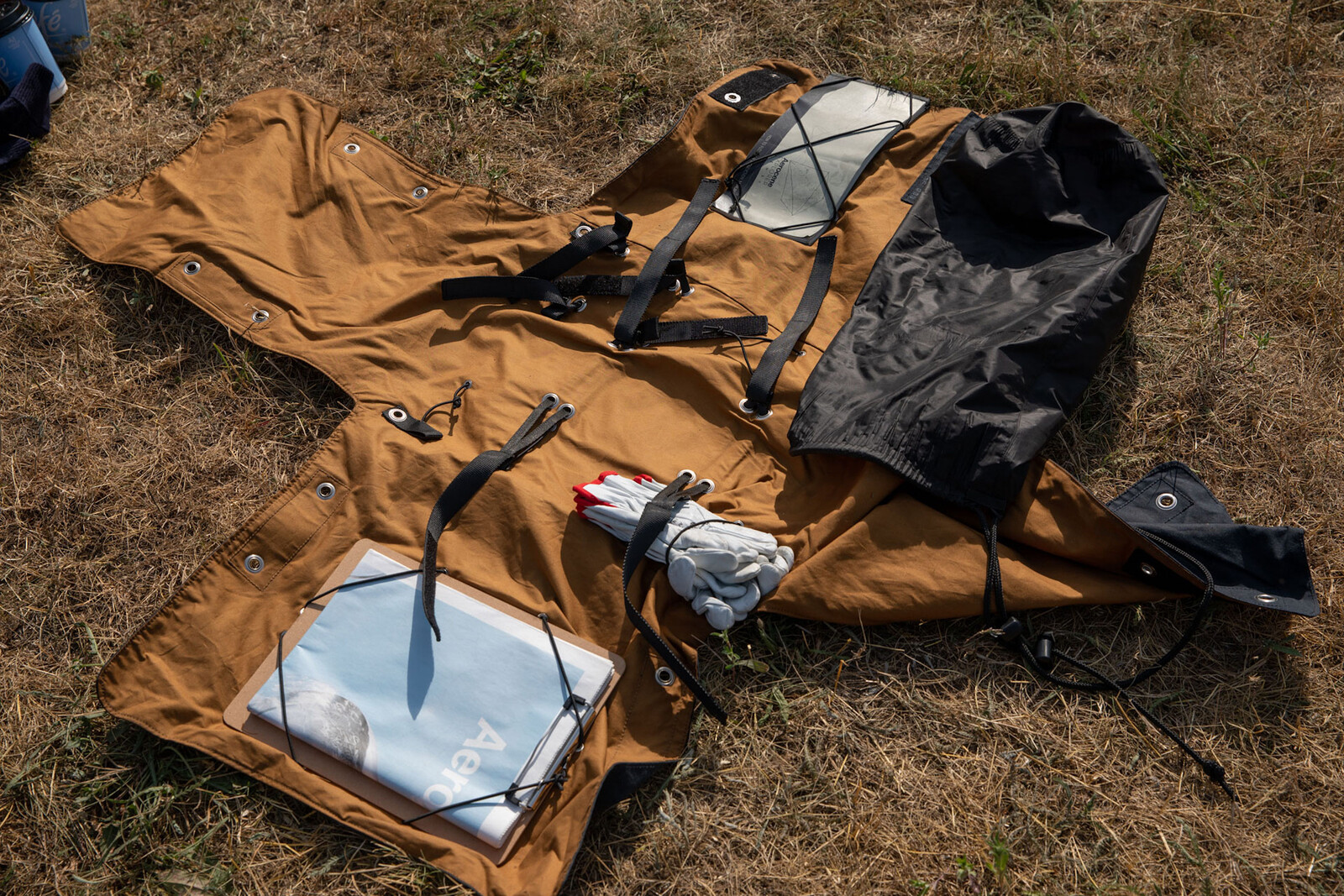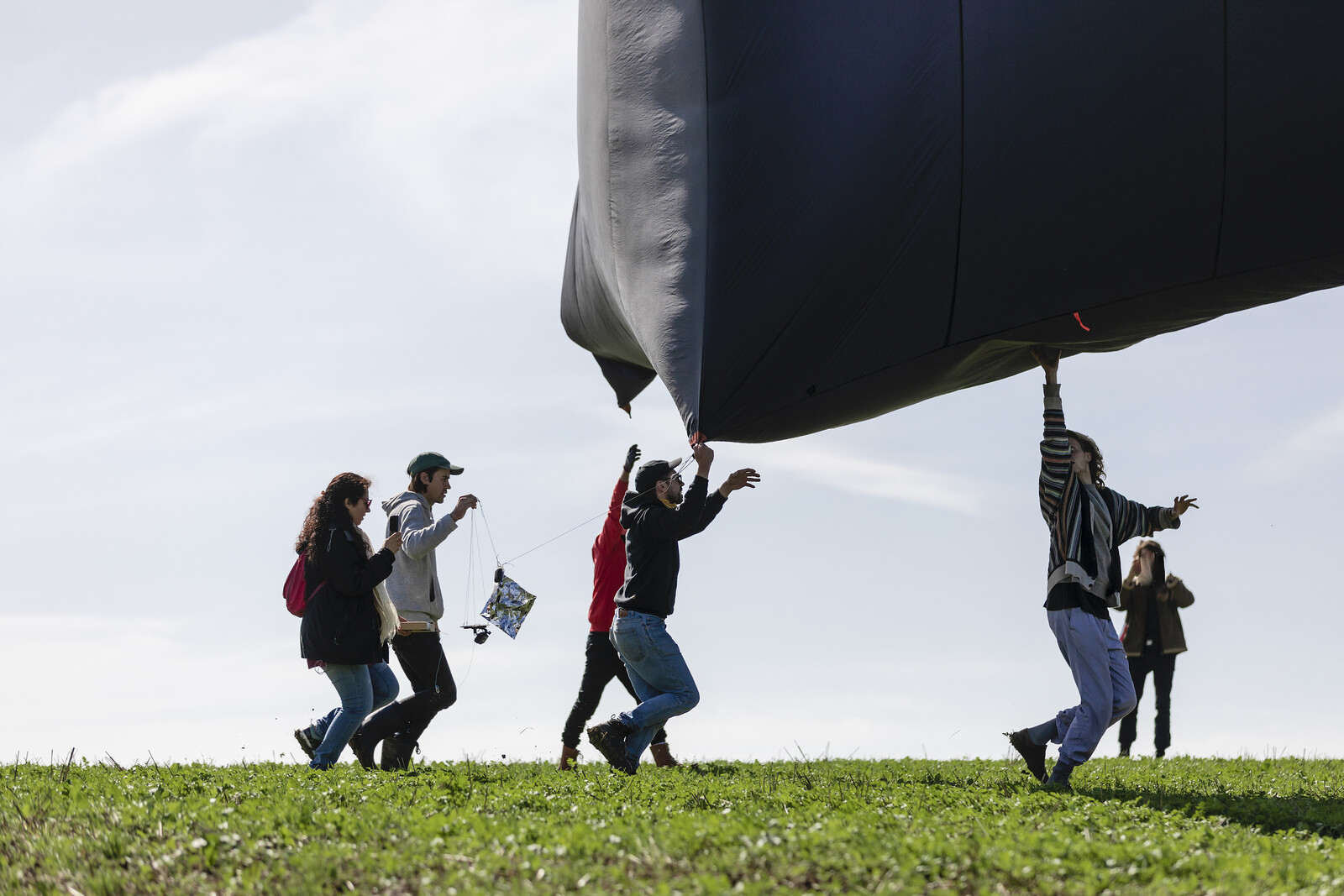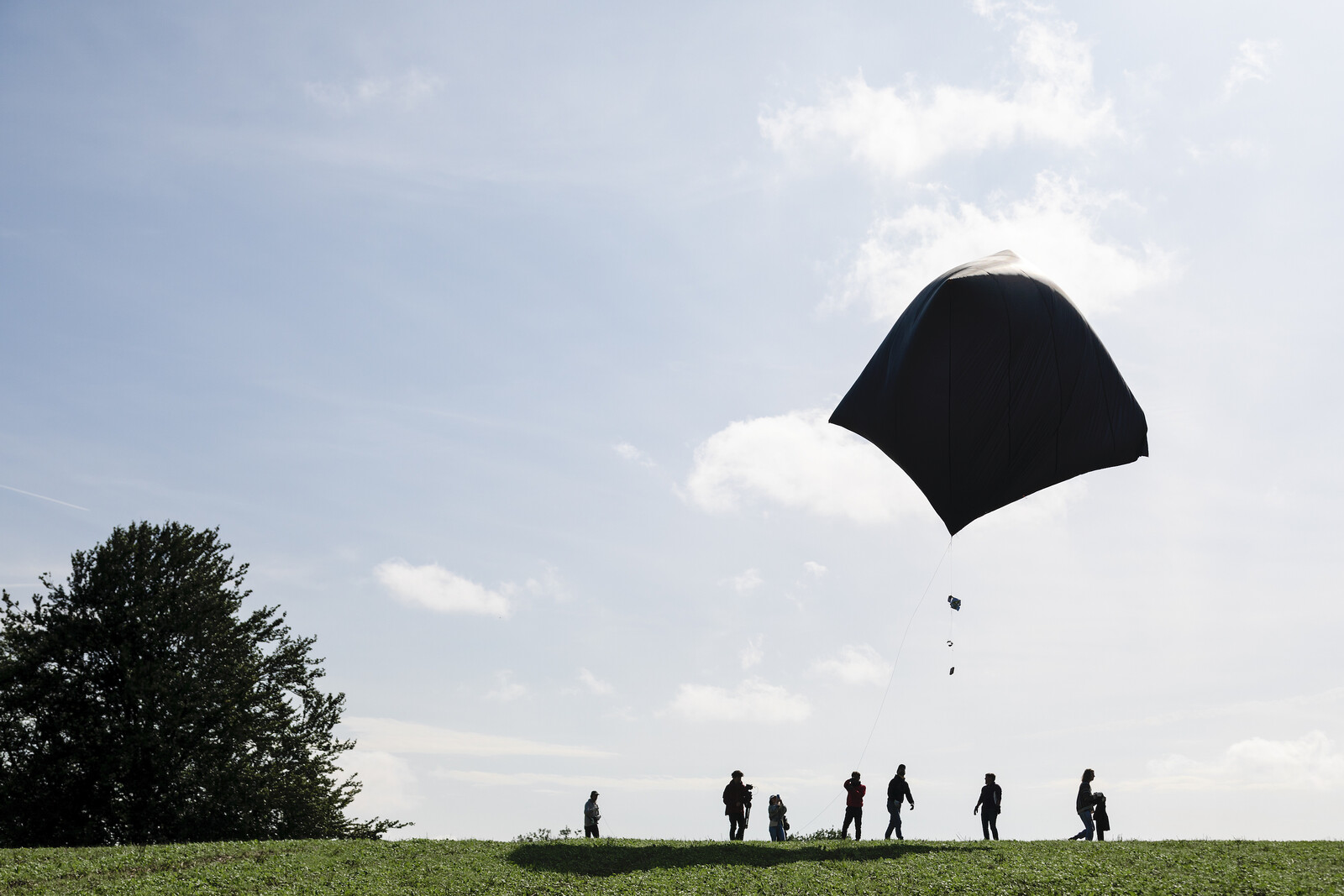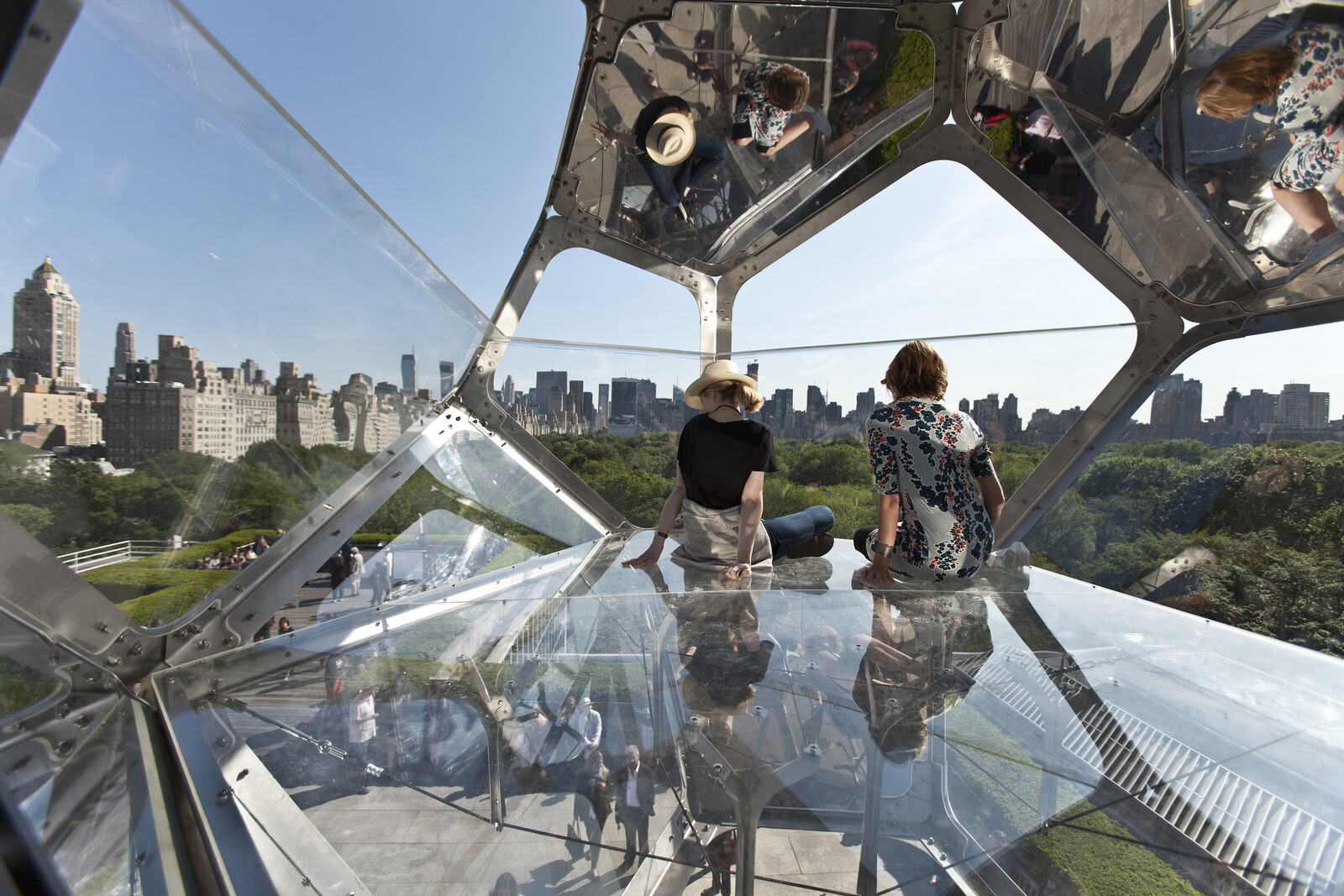The Argentine artist-theoretician Tomás Saraceno works at the nexus of nineteenth-century aeronautics, utopian urbanism, and synergetic cosmography. Although inspired in part by writers like Jules Verne, Paul Scheerbart, and Jorge Luis Borges, Saraceno’s hybrid oeuvre is perhaps most indebted to Archigram co-founder and “blobitect” Peter Cook, under whom he studied, and architectural polymath Buckminster Fuller. Beginning with installations Cloud Cities (2010–ongoing) and community projects like Museo Aero Solar (2007–ongoing), Saraceno has pursued a reconceptualization of posthumanism through aeromantic fantasies of foam habitats, floating cities, and flying sculptures.
Because of his work between the traditional sciences—including collaborations with researchers at MIT, NASA, CNES and the Max Planck Institute—and speculative futurism, Saraceno has cultivated a uniquely transdisciplinary audience of art critics, diplomats, environmental activists, and philosophers, including Peter Sloterdijk and Bruno Latour, who wrote in a 2011 essay that “Saraceno performed precisely the task of philosophy […] namely of explicating the material and artificial conditions for existence.”1
Saraceno’s most ambitious endeavor, the ongoing “Aerocene” project, is a two-decade-long study into the possibilities of “aerosolar” travel, a “practice of developing flying sculptures as a model for a new form of sustainable, carbon-free movement attuned to the rhythms of the planet.”2 In January 2020 these specially engineered solar objects earned thirty-two world records from the Fédération Aéronautique Internationale (FAI) for flights in Argentina’s Salinas Grandes. More than this, however, the project, which also boasts a foundation, educational initiatives, publications, and festivals, encapsulates Saraceno’s imagined alternative to the ecological catastrophes of the twentieth century with an anthropotechnic remapping of man’s relationship to Earth and its atmospheres.3
Erik Morse: Much of your work is dedicated to what you describe as life in the “Aerocene.” How do you define this term?
Tomás Saraceno: The Aerocene Foundation, which I founded in 2015, places an emphasis on thinking-through-making practices, open-source ethics, and DIT (or do-it-together) action. It choreographs relations with and between human and nonhuman bodies with and in the air, forming new knowledges through experiments with atmospheric dynamics, energy, and beyond.
Some humans have tried to master nature through domination, resulting in climate change, the genocide of cultures, communities, and species—and the emergence of viruses that otherwise might not have hit humanity. All of this proves the anthropocentric approach does not work. By moving together towards this era, and supplanting the current Anthropocene, we will be able to enter a different space-time, one that respects what lies below and above the earth’s surface and marvels at the furthest reaches of the cosmos.
For the Aerocene festivals, for example, comprising live events during which interactive aerosolar sculptures are flown, we set certain guidelines—as the Situationists did for their dérives. Participants are not allowed to travel by plane or by car. We try to adopt a different diet, too: at the studio we have invited Foodsharing, an organization that makes meals from food that would otherwise go to waste. It shows we are all capable of behavioral change, if we make a conscious effort to do so.
EM: In his book Foams: Spheres III (2004), Peter Sloterdijk, a self-described “student of the air,” has argued that in the twentieth century the air became the focus of a new type of designer warfare. He says this “atmoterrorism” presents an assault “on the environmental conditions of the enemy’s life” in which “the air [has] lost its innocence.” How do we move from atmoterrorism to the Aerocene?
TS: Let me talk about an artwork that connects to this context: We Do Not Breathe the Same Air (2020). It implicates a machine called the Beta Attenuation Mass Monitor (BAM) that visualizes the disproportionate distribution of air pollution that amplifies environmental justice issues.
Harriet A. Washington’s 2019 book A Terrible Thing to Waste: Environmental Racism and Its Assault on the American Mind was a profound influence for this work. As a medical anthropologist, her reporting tells the story of the unequal distribution of pollution along geopolitical and racial lines; a consequence of the Capitalocene era. Among the most striking facts of her statistics, she reports that Black families in the US making $50–60,000 per year are significantly more affected by pollution than white families making only $10,000 over the same period, revealing that race, not class, is the most determining factor in access to clean air.
Inspired by Washington, I worked with my studio to speculate on this unequal distribution, revealing the conditions of our era, in which those who have caused the highest environmental damage still breathe the cleanest air. We need to remember the environmental racism all over the world, determining which communities have the possibility to breathe a certain quality of air. And when I say “we,” I understand—and we have to consider this throughout the entire conversation—that “we” are not all equally privileged. These inequalities have become further evident in the present pandemic, since one of the biggest obstacles to recovery from Covid-19 is a person’s lung health. This brings to mind Achille Mbembe, who says, “All these wars on life begin by taking away breath.”4
Environmental racism is a chronic issue with numerous casualties and countless battlegrounds. The air carries our injustice, our racial inequalities, and our patriarchal economies that do not seem to be at risk of extinction any time soon. We live in an “Airpocalypse.” With my work, I hope to alert people to the fact that a different era that radically upturns fossil narratives of materiality is needed—and possible. I like to call this era the Aerocene.
EM: As part of the Aerocene Foundation, you have also aided in the creation of the Aerocene Backpack. This portable sculpture, versions of which can either be borrowed from you directly or autonomously built by others according to your instructions, has been flown in Berlin and Paris as part of Extinction Rebellion marches and at COP21, as well as by indigenous communities in Argentina. This work seems to move away from the “floating” habitats and built environments of Cloud Cities and Observatory, Air-Port-City (2003–ongoing) and toward an art of personal nomadism, which you call “airnomadism.” Like Duchamp’s Sculpture de voyage (1918) and Boite-en-valise (1935–41) or the Constructivists’ fantastical flying bicycles and human birds, your airnomadic work could be read within a lineage that critic T. J. Demos has called an “aesthetics of homelessness”—an avant-garde response to the mechanized war, mass transportation, and displacement of the twentieth century. Do you see airnomadism as a form of homelessness and/or escape?
TS: An aerosolar sculpture is not meant to remove you from Earth so that you can live in some unsullied environment above the clouds. Rather, it re-examines the inscribed notions of property and properties, human and inhuman, production and subjection. It should ask questions. How would breathing feel in a post-fossil-fuel era? How can we challenge extractivism? Aerosolar sculptures allow us to work together—not to escape from earth, but to form a different reciprocal alliance with the elements capable of restoring the air to a commonwealth of life.
The capacity to breathe a certain quality of air may be connected to the ability to move around freely. It might help to add some personal background: an early “nomadism” I experienced as a child is expressed throughout my work. I was born in 1973 in Argentina. A year later, my family was forced to leave the country due to the dictatorship. More than forty thousand people disappeared from the country during this regime. My father was in jail for a couple of years and my sister was born during that time. We were forced to move out of the country. Since my father had an Italian passport, we moved there. When I was 12, my family decided to go back to Argentina. And I said: “Go back where?”
It’s like when someone says: “Let’s go back to nature.” You think “Yes… but, back to where?” Humans have set themselves apart from nature, classifying it as an entity that is exterior to us. The logic of human exceptionalism has missed the point, and now we are having difficulty returning. In form and content, my work is deeply rooted in the idea of the “web of life”—a concept brilliantly analyzed by Fritjof Capra in his 1996 book of that name. And this is why breath, space, and our co-production of the air are relevant, recurring themes.
EM: Do you consider your work to be utopian?
TS: When we think about utopia and dystopia, we have to be very careful to consider for whom. Something may be a dream for some, and a nightmare for others. Today the dream of flight has become a nightmare. But what if we could fly differently? As we have done hundreds of times over with Aerocene, using only the sun and the air—flying without fossil fuels. Aerocene solar flights are beyond the use of aerodynamics. Perhaps these aerosolar sculptures, through their communion with the elements, and ability to travel in real time with the wind and the sun, have less immediate glory than the fiery burst of a rocket. Yet, these performances renew our relationship with the air, allowing it to be something we can all breathe.
EM: If we look back a century to Paul Scheerbart’s 1909 dystopian pamphlet “The Development of Aerial Militarism and the Demobilization of European Ground Forces, Fortresses, and Naval Fleets,” only six years after the Wright Brothers’ first successful flight, the eccentric German writer already predicts the sky as the new frontier of warfare filled with “air fleets” dropping “air torpedoes” and destroying whole fortresses and cities. Do you think it is possible, after a century of technological conquest, to conceive of a demilitarized sky?
TS: Perhaps I could answer here by talking about the Fly With Aerocene Pacha (2020) project we conducted in Argentina. Last January we were in Salinas Grandes, Jujuy, in the north of Argentina. A place with large salt flats, now (in)famous for its abundance of “white gold,” it is a triangle of land shared by Bolivia, Chile, and northern Argentina, containing one of the biggest reserves of lithium on the planet. Lithium is used in mobile phones and is essential to the energy transition from fossil fuels to the electrification of society. This is done at huge cost to the people who live in this territory: communities who lose their water and their livelihood. For every ton of lithium, two million liters of water are also extracted.
When we arrived, we asked the indigenous communities for permission to work on their lands. And they said: “Now we have to ask permission from Mother Earth.” There was a ritual of thanks and giving; Pachamama—acknowledging the symbiotic relationship with the earth. Pachamama is Mother Earth, but Pacha, which is a concept of Pre-Columbian civilization, unites space and time with the cosmos: a vision implying the impossibility of dividing the entangled relationship of things.
Fly with Aerocene Pacha consisted of many communities working together with balloonists, activists, scientists, philosophers and geographers. We had one incredibly meaningful collaborator, Maristella Svampa, a sociologist who has worked for decades researching and working towards indigenous rights in northern Argentina. She highlighted the importance of ecofeminism; the role women have established for themselves in the Salinas in the struggle for interdependence, care and reciprocity for this land and by other women over much of Latin America. Leticia Marques, meanwhile, helped to make this project about moving past extractivism, capitalism, and patriarchy. She is the only female pilot in Argentina, and with the Aerocene community she has achieved the most sustainable flight in human history.
You asked me about demilitarization, a way to harness and use technology with a respect for all things: I would say empowering women, or rather giving space for women to empower communities, particularly in developing countries, is the most powerful possibility we have to build a different future.
EM: Your designs often make use of inflatable and modular habitats and floating cities while referencing archetypes such as spheres, foams, clouds, and human cells, all of which lends the work a utopian or science-fictional tone reminiscent of the work of Charles Fourier, Buckminster Fuller, Bruno Taut, and Lebbeus Woods, among others.
TS: I live in a building built by Bruno Taut. I am a big fan of his work. He also built the Horseshoe Estate, the social housing estate in Berlin with a garden in the center. It’s very, very beautiful.
EM: You have also pointed to the influences of modular architects like Yona Friedman and Frei Otto.
TS: Yes, Frei Otto. I met him two times, and we did an exhibition together.
EM: Some art critics have described your large exhibitions as part of “an ecology of spectacle,” alongside those by contemporary artists like Olafur Eliasson, Ernesto Neto, and Anish Kapoor. What role do you think scale and spectacle play in your work and in the gallery space?
TS: I have a background in architecture, so for me it’s very natural to work on a larger scale. I like to think on a cosmic scale, and I also like to think on the small scale of the spider web. As you mentioned Fuller earlier: he was always fascinated with this idea of Spaceship Earth. Pachamama—Mothership Earth—is a term I personally like to use instead. It implies that we are not the creators of a technologically administered planet, quickly flitting from Spaceship Earth to Spaceship Jupiter or Mars, when our actions have irrevocably altered a once habitable space. It is rather our mothers who make us. We are decisively formed by this Mothership Earth on which we all float. I think this could help us out of these technologically driven ideas of salvation—which are utopian for certain societies, but dystopian for others.
My grandfather once gave me a book called Cosmic View: The Universe in 40 Jumps (1957), which was produced twenty years before Ray and Charles Eames popularized the book, which explores different levels of scale from cosmic to microscopic, in the pair of films comprising The Powers of Ten (1968/77). It was written by a schoolteacher in the Netherlands, Kees Boeke. The book would zoom in or zoom out by a power of ten, so you were jumping in scale and seeing different realities. This book had a big impact on me, and this play of scales comes back again and again in my work: the cosmic web and the spider web.
EM: How does your recurring usage of nonhuman forms like bubbles, spheres, clouds, weather patterns, spider webs, and so on allow us to see architecture beyond its traditional, anthropocentric scale?
TS: One of the most beautiful moments was when we installed the Cloud Cities sculpture on the rooftop of the Metropolitan Museum, and an eagle from Central Park decided to build a bird’s nest on top of the sculpture. That’s the moment when I thought that maybe we were doing something right. The animals liked it so much that they started inhabiting it. And as part of “Down to Earth,” the exhibition at the Martin-Gropius-Bau, Berlin, which opened earlier this year, I wrote an “Open Letter for Invertebrate Rights.” We noticed a spider had begun to build a beautiful web in one of the exhibition rooms. So I asked the museum to keep that web until the start of the exhibition. The spider remained through the entire pandemic and during the entire show. I convinced the museum that she has a right to live inside the museum for the rest of her life—she and her web are now part of the permanent collection for as long as she wishes to continue inhabiting the space. Spiders have lived on earth for 380 million years while humans have only inhabited it for 200,000 years. People have said to me that spiders live in our homes, but I say that I live in the homes of spiders.
Bruno Latour, “Some Experiments in Art and Politics,” e-flux journal 23, March 2011.
Fly with Aerocene Pacha press release.
A term popularized by Sloterdijk that refers to the human employment of technologies and symbolic regimes to transform the self and its meaningful relations with the world.
Achille Mbembe, “The Universal Right to Breathe,” Critical Inquiry, April 13, 2020.
